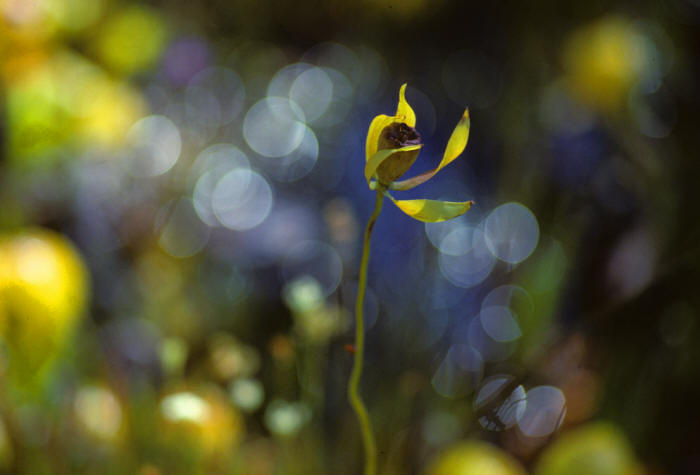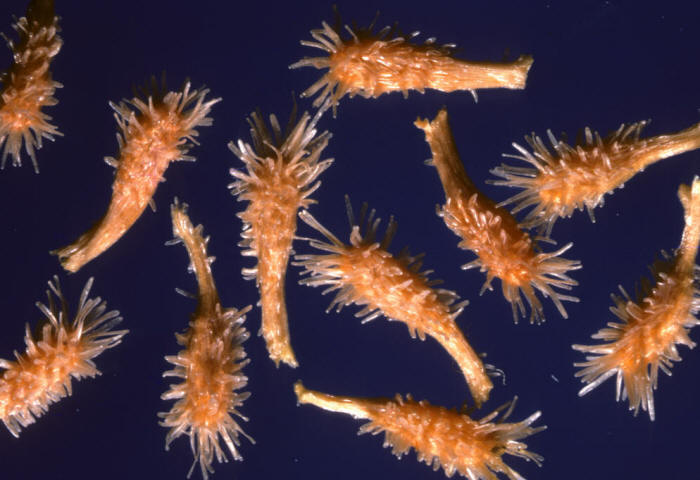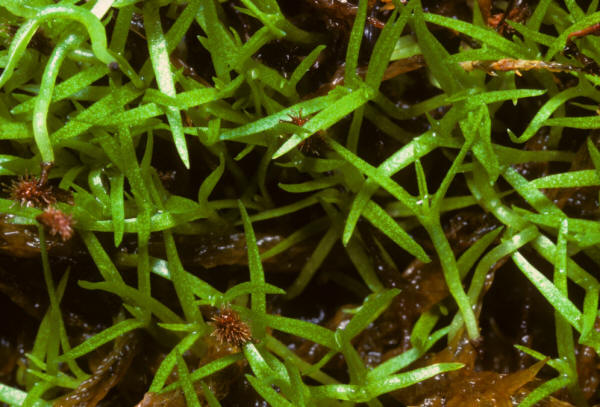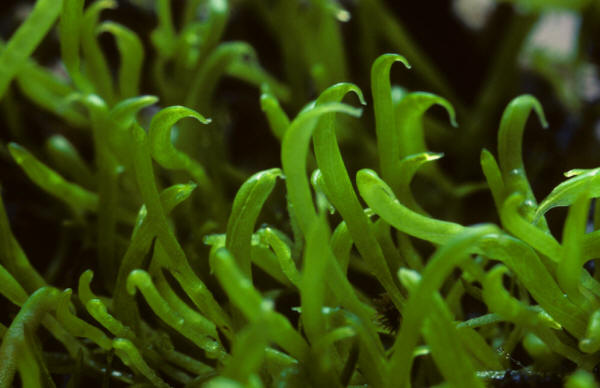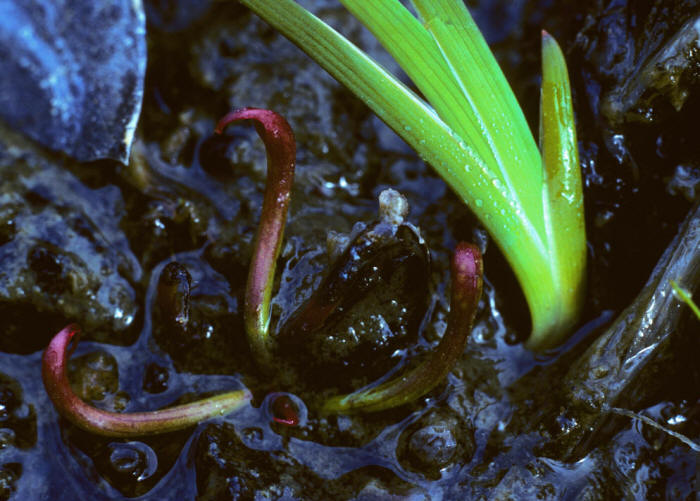|
Carnivorous Plants Story
|
||
|
|
Darlingtonia californica A fruite capsule of the cobra plant flower. After fertilization, as the pendulous flower rise to an erect posture, the tall scape grows further often reaching 90 cm or more. By August, the seeds fully mature, assuming a light brown color. Each capsule contains anywhere from 1000-2000 seeds.
A characteristic, pear-shaped seed has numerous projections.
It takes 2-3 years for the seedling to produce a characteristic cobra shaped leaf. A Darlingtonia baby in Oregon. The strong sun gave a good red tint to the seedling. A pointed tip of the pitcher deep-red color..
When the trigger hairs on the inner surface of the trap lobes are stimulated, the clam-shell-shaped trap closes suddenly --- often in less than a half second --- fast enough to capture such agile insects as a fly quite comfortably. Intermeshing marginal spines effectively prevent the prey's escape. After the initial rapid closure, the insect's struggle inside the trap further stimulates the trigger hairs, causing the trap lobes to close even more tightly. In a day or so, the trap is seen tightly sealed around the free margins of the lobes, with the marginal spines pointing outwardly. The digestive fluids start to ooze into the now sealed trap cavity. As the digestive process progresses, the products of digestion are swiftly absorbed through the leaf and are carried away to the other parts of the plant.
Introduction Venus Flytrap Sundews Pitcher Plants Cobra Plant Butterworts Bladderworts
|
|
